Camino Francés Surprises: 9 Things You Might Not Expect
Our Camino Francés was full of surprises – yours might be too
Thinking about walking the Camino Francés? Or maybe you’re in the planning stages and wondering what it’s really like? We walked in 2025, and even with all our research and prep, we still ran into a few Camino Francés surprises.
As the most popular route of the Camino de Santiago, we knew it would be beautiful. We knew it would be challenging. But from wandering tiny villages in desperate search of dinner to being stunned by views, some moments caught us totally off guard – in the best (and occasionally hardest) ways.
We’re sharing those in this post.
How the Camino Francés Surprised Us
The Camino Francés surprises you.
Not because you haven’t read about the hills, the food, or the sense of community (we had, too). But it’s the timing of things, the depth of the experience, and the unexpected ways they show up that really catch you off guard.
Here are nine things that surprised us on the trail.
1. The Food
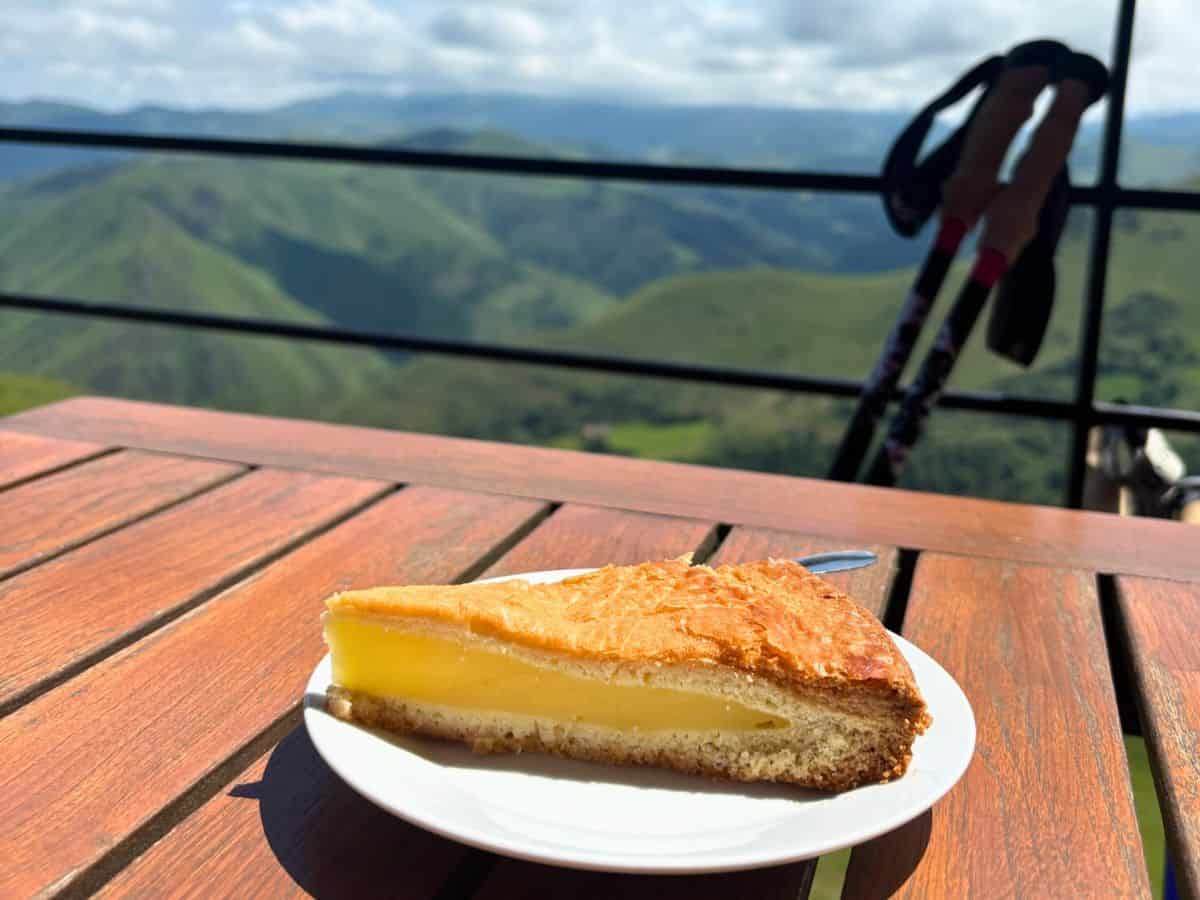
If you’re expecting every meal to be rustic Spanish cuisine and mouthwatering tapas, you might want to adjust your expectations.
There are some wonderful food moments on the Camino Francés – fresh tortilla, home-cooked pilgrim dinners, cozy bars with good coffee and pastries. But there were also plenty of nights we struggled to find a decent meal, especially in smaller villages with limited options.
We encountered more frozen pizza than we care to admit. The best (read: worst?) was one topped with what seemed like an entire bag of frozen vegetables – you know the kind, with peas and diced carrots. But calories are calories on the Camino.
That said, when the food was good, it felt extra special. A warm bowl of homemade soup after a long, rainy day. Basque cake the Pyrenees. Crispy patatas bravas. You learn to savor the little things.
Camino food tip: Be ready for simple meals some days, and savor the special ones when they come. Packing snacks can be a lifesaver when options are slim.
2. The Hills
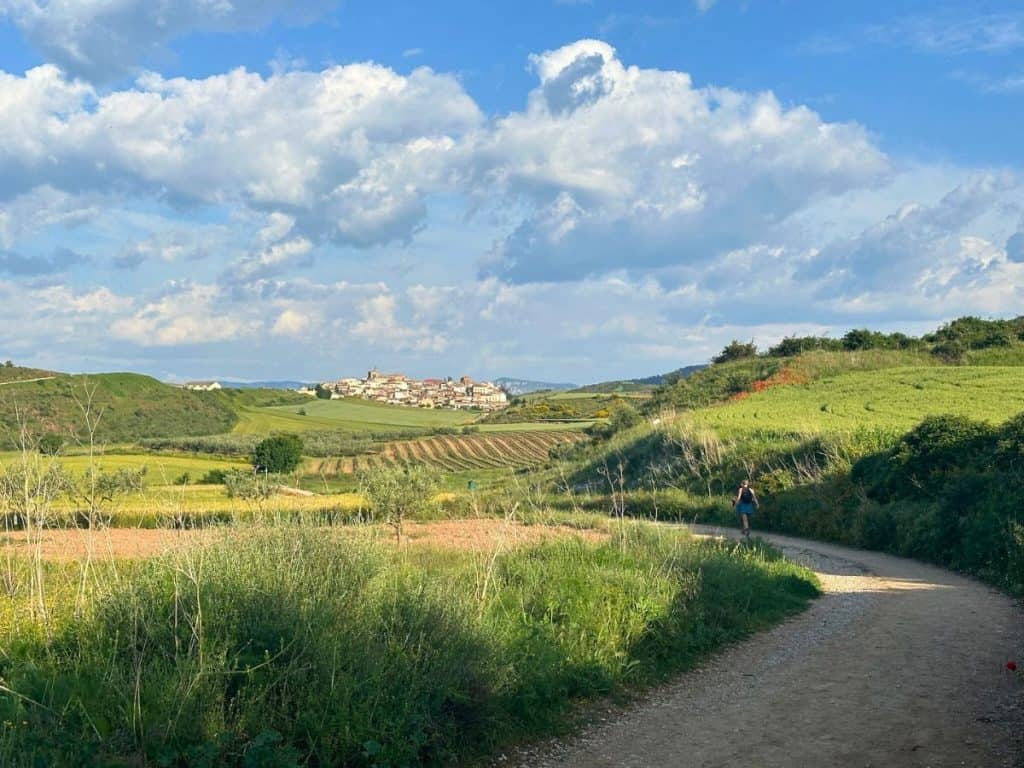
We expected elevation gain at the start. The climb out of Saint-Jean-Pied-de-Port is one of the Camino’s most famous stretches, and everyone talks about it. What no one really talks about? The fact that the hills don’t stop there.
If you’re new to multi-day hiking, the Camino might seem like a relatively gentle walk across Spain – and sure, it’s not the Alps – but it’s also not flat. All those little hills add up, and they can take a real toll on your body over time.
Many towns are located at the top or bottom of hills, which means climbs into or out of villages almost every day. Some days, just when we thought we’d made it to our stop for the night, we’d look up and realize – nope, the last bit is uphill. Everything is earned on the Camino.
The downhill stretches could be even worse, especially on tired legs. Some descents were so steep they felt unrelenting.
This is where apps like Camino Ninja really came in handy, especially ones that showed stage profiles with elevation. That said, there were days when we chose not to check the elevation. We had to walk it either way – sometimes it was better not to know. Different mental games for different days.
Camino elevation difficulty: Don’t underestimate the hills, and use apps or maps to prepare, but also embrace some days without looking ahead.
3. The Scenery (Including What’s Behind You)
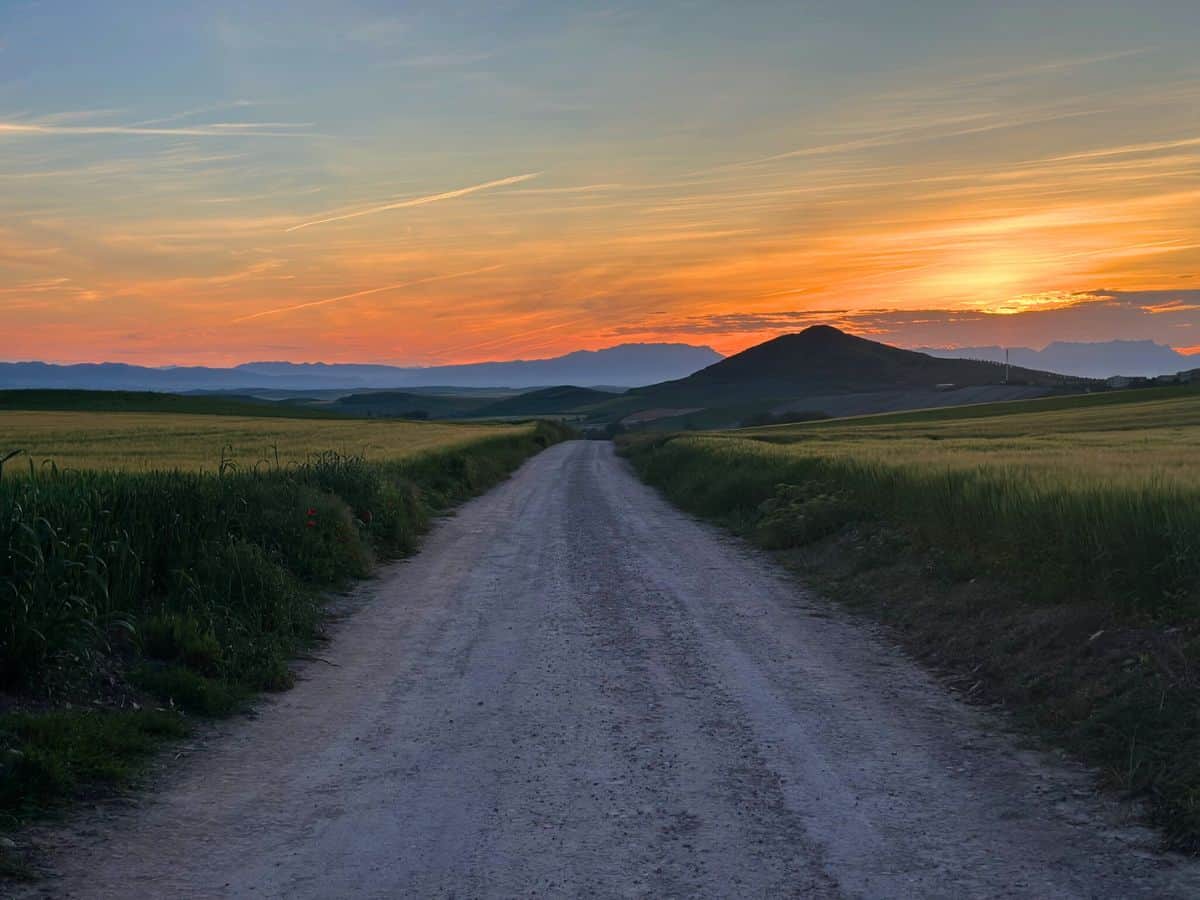
Before we walked, we’d watched countless YouTube videos about the Camino, so we knew the views would be beautiful. But we didn’t expect just how varied that beauty would be – not just day to day, but within a single day.
The Camino Francés winds through mountains, rolling farmland, quiet forests, valleys, and sun-drenched plateaus. What surprised us most was how often and how dramatically the landscape shifted. One minute you’re under a highway overpass, the next you’re descending into a medieval town, and before long, you’re staring out across a ridge of rugged mountains.
And some of the best views? They were behind us. One morning, on an early start to the day, I looked behind me to see a beautiful sunrise.
With the physical effort required each day, it’s easy to keep your eyes fixed forward. But one of the best pieces of advice we can offer is this: look behind you. The trail’s beauty isn’t just what’s ahead. Some of our favorite vistas came when we paused and turned around, especially in the morning when the rising light cast everything in golden tones.
Takeaway: Keep your eyes open in all directions – breathtaking views aren’t just ahead, but behind and all around you.
4. How Your Body Adapts

On Day 5, we walked more than 14 miles, and I genuinely thought, There’s no way I can keep this up. I started mentally calculating how to shorten future days – take a bus, split stages, something. But then I reminded myself why I was walking the Camino in the first place: for my dad. So I kept going. One foot in front of the other.
And something incredible happened.
By Day 12, I walked 18 miles. On Day 13, I walked 23 – into Burgos, our stopping point for this section. Now, would I have pushed that hard if we were continuing on for weeks? Probably not. But the fact that my body could do that – after struggling so much a week earlier – was astounding.
Your body really does adapt. The aches lessen, your legs find their rhythm, and what once felt impossible slowly becomes normal. You get stronger, steadier, more sure-footed. It’s one of the most fascinating parts of the Camino: watching your own body rise to meet the challenge, day by day.
Building strength: Your body will surprise you with its ability to grow stronger – just keep putting one foot in front of the other.
5. How Your Body Breaks Down
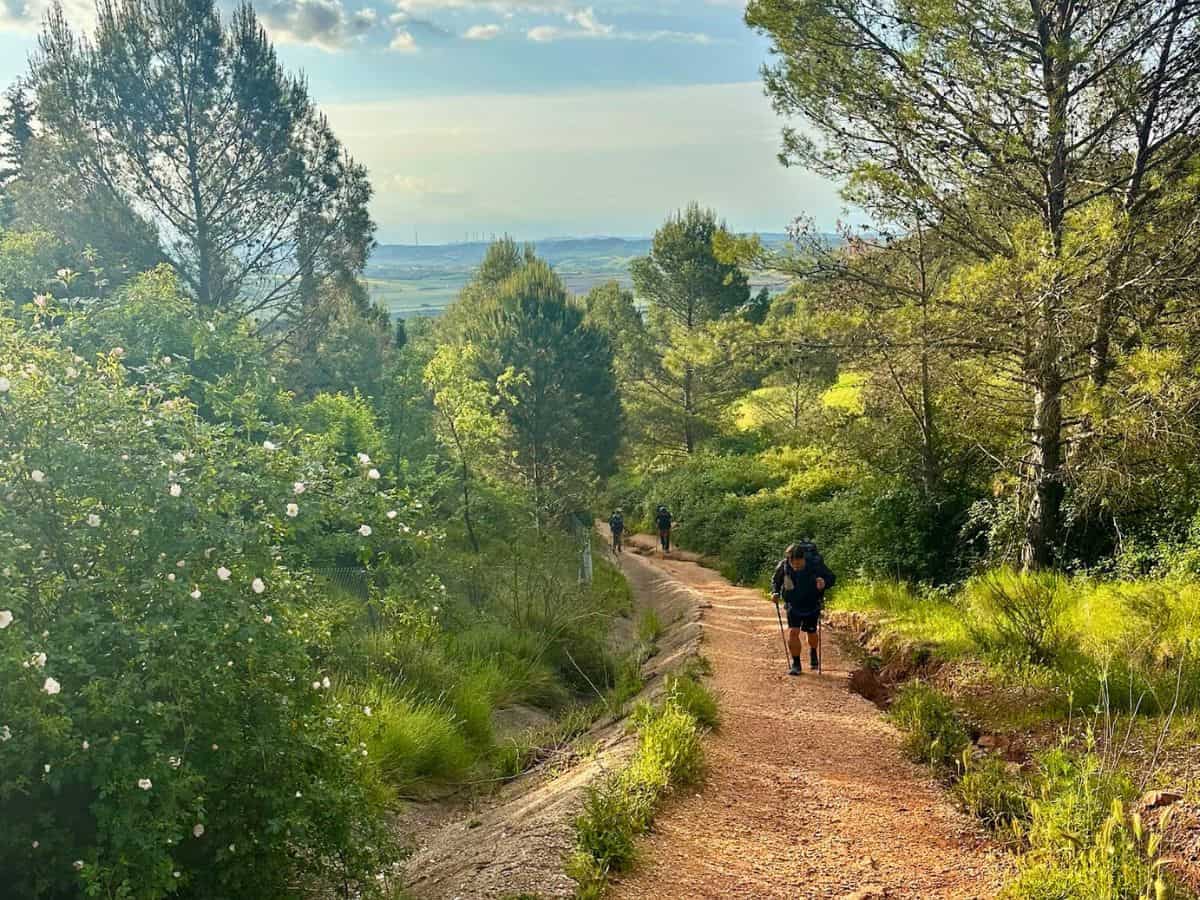
Of course, it’s not all progress and strength.
Alongside adaptation comes wear and tear. Steve and I dealt with blisters, shin splints, mystery rashes, cold symptoms, and general soreness. Even with good gear and preparation, your body is working hard – day after day – and sometimes it pushes back.
What surprised us? That some of these issues didn’t show up right away. They crept in after we’d already completed what we thought were the toughest stages.
People often say that the first part of the Camino Francés is a physical challenge, and once your body adapts, it becomes more of a mental one. While that’s true, there’s plenty of overlap. When your body struggles, it takes serious mental strength to keep going.
Injury or discomfort on the Camino doesn’t mean failure. In fact, I think it’s part of the experience – a rite of passage of sorts. You learn to slow down, listen to your body, and care for yourself – not just physically, but mentally, too.
Camino injury advice: Injuries and aches are part of the journey. Listen to your body, rest when needed, and don’t see setbacks as failure.
6. How Many People Walk Alone
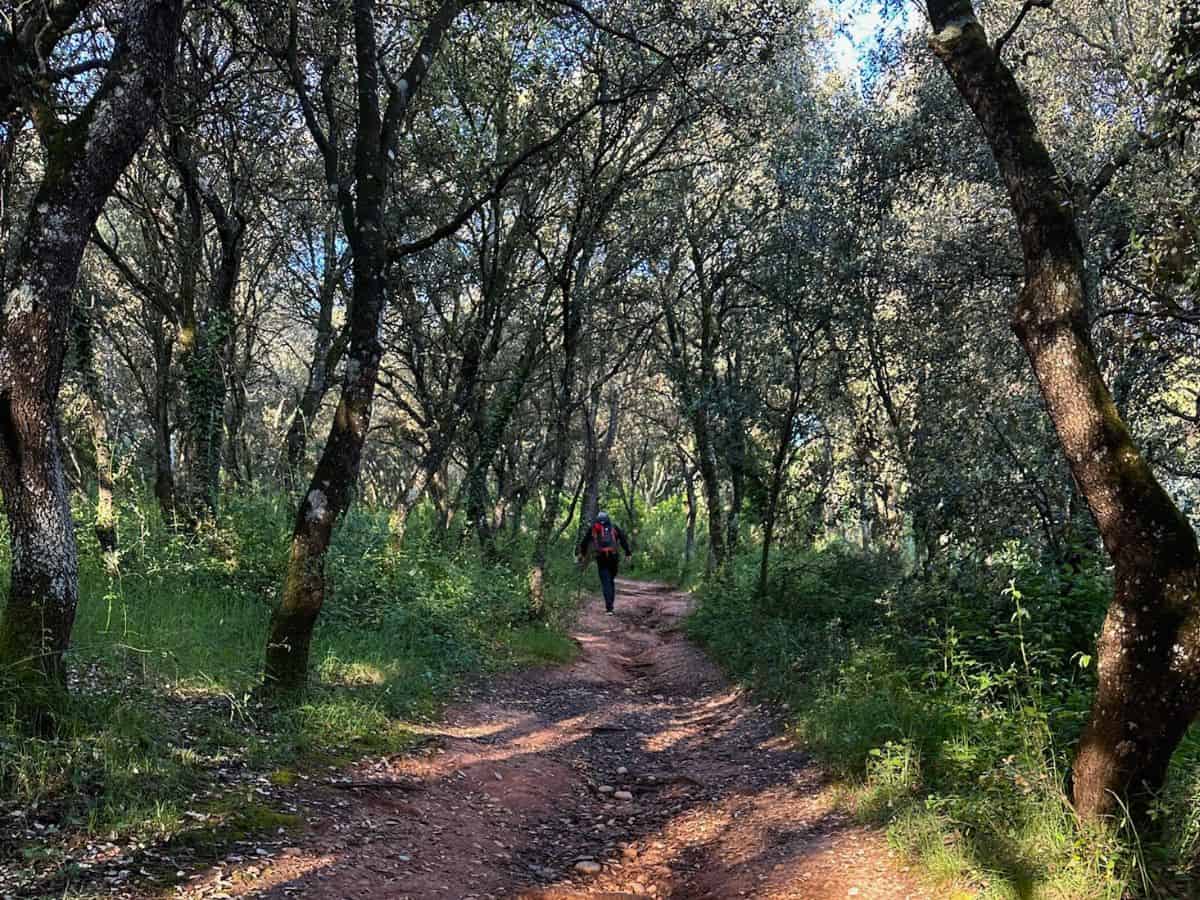
We walked as a couple and assumed that pairs or small groups would be the norm. But on the Camino Francés, we were in the minority.
Most of the pilgrims we met were walking solo. Some were taking time off work or navigating a life transition. Others were marking a milestone or simply craving time alone.
But here’s the thing: solo pilgrims aren’t really alone – or at least, they don’t have to be. What we noticed was that many solo walkers connected with others more quickly and easily than those of us walking with a partner. There’s a natural openness on the trail – it’s not weird to join someone for a stretch of the day, or to grab a communal dinner together that night.
The Camino creates space for connection, whether you arrive solo or with someone else. And that leads right into…
Camino solo walking tip: If you’re a solo walker, know you aren’t truly alone. The Camino naturally builds connections and community along the way.
7. The Sense of Community

Before we started, we’d heard people talk about the “Camino community,” but honestly? I didn’t expect it to be real. Maybe a few trail friends, sure – but an actual sense of community?
That’s exactly what we found.
It’s not just about deep conversations (though those happen too). It’s about the rhythm of familiar faces. The daily “Buen Camino” greetings. The people you nod to every day on the trail, or share a knowing smile with as you both collapse into chairs outside a bar for a midday café con leche.
We even met a woman who didn’t speak English or Spanish, but we’d smile and wave to each other daily, sometimes exchanging gestures or a laugh. It was a small but meaningful connection – and those moments are everywhere on the Camino.
We’re not the most extroverted people, but even we developed a little Camino “family.” Some we knew by name, others just by sight. And when we finished walking, we genuinely missed them.
Camino community: The Camino creates a moving village of familiar faces and shared moments. Even simple greetings build deep connection.
8. Living in a Camino Cocoon
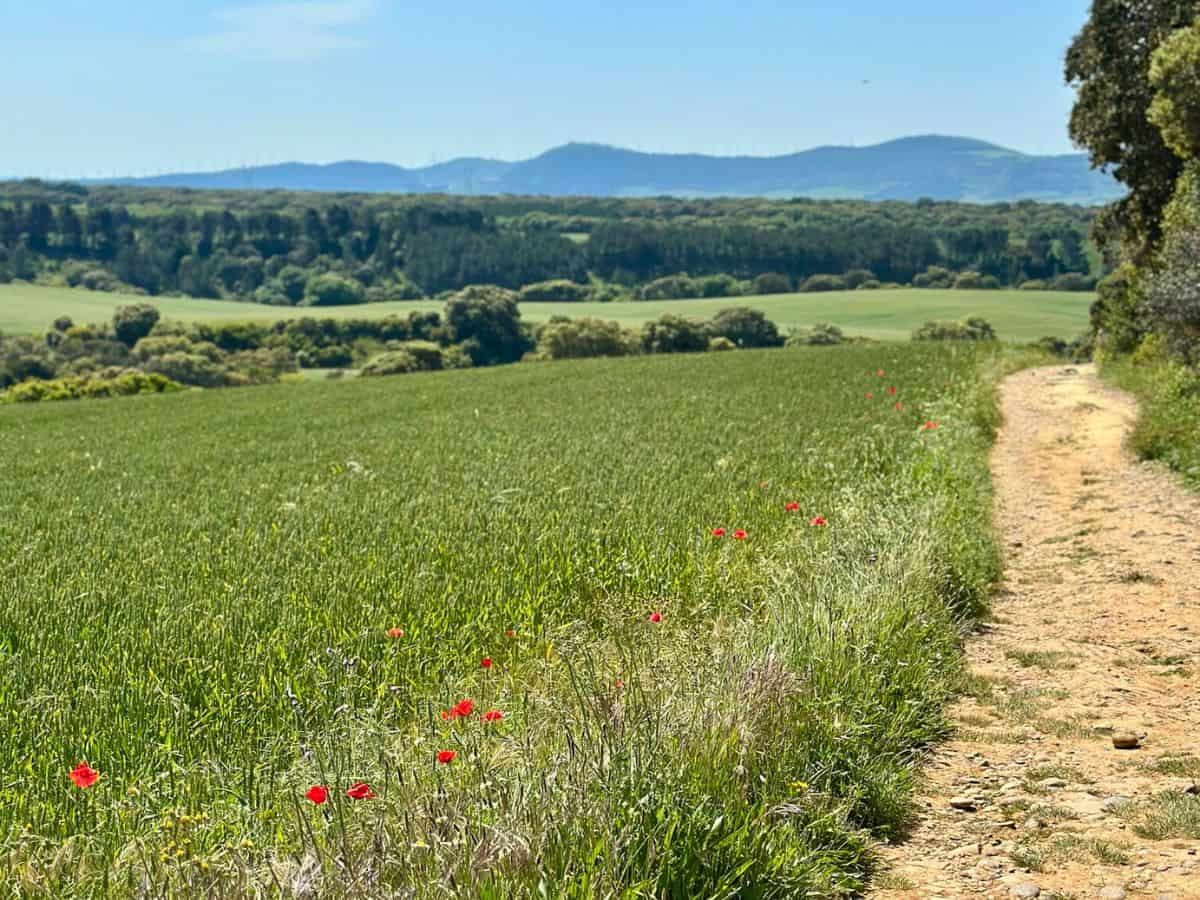
One thing we didn’t expect? How separate we’d feel from the rest of the world.
When you’re walking the Camino, your days become beautifully simple: wake, walk, eat, rest. You live almost entirely in the present. And it wasn’t until we stopped walking that we realized just how protected and removed the Camino bubble had felt.
Sure, we still checked in with family and caught the occasional bit of news. But life on the Camino wraps around you like a warm, quiet hug. You’re still living life – and yes, there’s still stress – but it’s a simpler life. And the stress feels quieter somehow.
That bubble makes reentry strange. Cities feel noisy. Schedules feel packed. Your senses are on high alert again. But it also makes you realize just how special the Camino is while you’re in it. You’re fully there. And that’s a gift.
Takeaway: Expect to feel cocooned in a simple, present moment bubble on the Camino. And prepare for reentry to busy life afterward.
9. The Odd Pull to Return

This last one was one of our biggest Camino Francés surprises.
Before walking the Camino Francés, I assumed I’d be satisfied walking the full route once and then moving on. There are so many trails to hike and places to see around the world. And I want to go everywhere. And yet, I also want to go back to the Camino.
Despite the physical challenge, the sore muscles, the sometimes questionable food, the unrelenting hills, the bunk beds – the Camino somehow gets under your skin. All the things above combine to create a travel experience like no other. It’s simple, it’s hard, it’s quiet, it’s connective. And that’s exactly what makes you want more of it.
There’s something about the Camino that feels like a retreat. Not a sit-still-and-meditate kind of retreat, but a slow, physical, deeply human one. And once you’ve had a taste of that, it’s hard not to want it again.
I remember our host in the Pyrenees, at Auberge Borda, telling us, “If you’re here now, you’ll probably be back someday.” And honestly? I think they’re right. If life allows it, you’ll likely find yourself wanting to return.
Whatever the reason – the Camino stays with you. And if you’ve walked it, or you plan to, don’t be surprised when you find yourself daydreaming about going back.
Returning to the Camino: Despite the challenges, the Camino’s unique blend of simplicity, challenge, and connection might you back for more.
Camino Francés Surprises: Expect the Unexpected
One of the things we’ve come to love most about the Camino is that, no matter how much planning you do (and we did plenty!), you can’t fully prepare for everything you’ll experience. These were our Camino Francés surprises – the unexpected moments that challenged us, inspired us, and stayed with us long after we got home.
Yours might be similar… or completely different. That’s part of the beauty of the Camino: no two walks are the same.
So yes, plan well. Pack smart. Train if you can. But leave some room for the unknown. Because often, it’s the surprises that shape your Camino the most.
Planning to Walk the Camino De Santiago?
Check out our resources for walking:
- Walking the Camino for Someone Else: A Walk with Purpose
- Daily Camino Routine: A Day in the Life of a Pilgrim
- Walking the Camino Francés in Sections
- Camino Packing Tips: What We Loved – and What We’d Leave
- Camino Francés for Beginners: Advice for Planning and Walking
- 7 Reasons to Walk the Camino – And Why You’ll Find More
- Where to Stay on the Camino Francés: A Practical Guide
